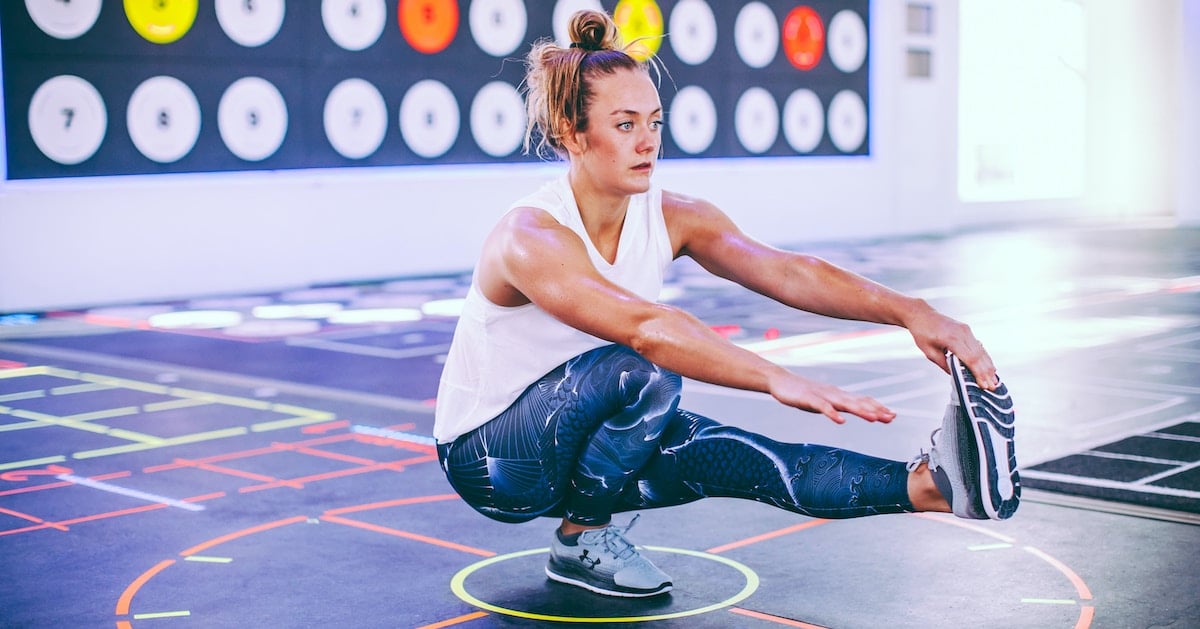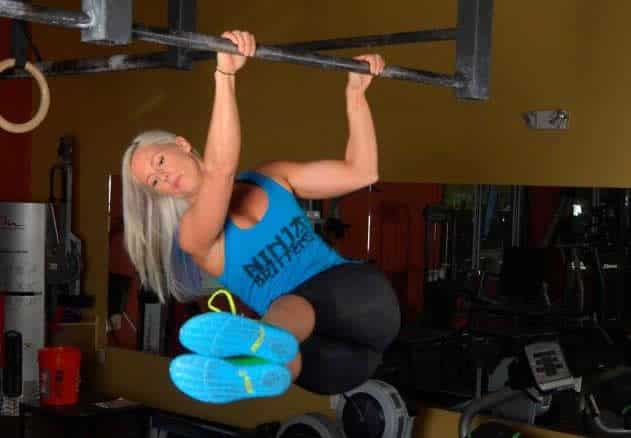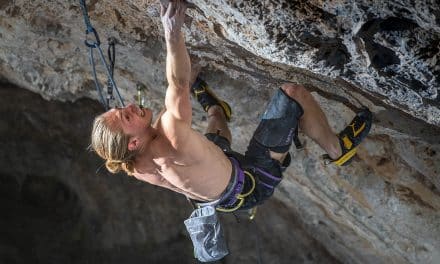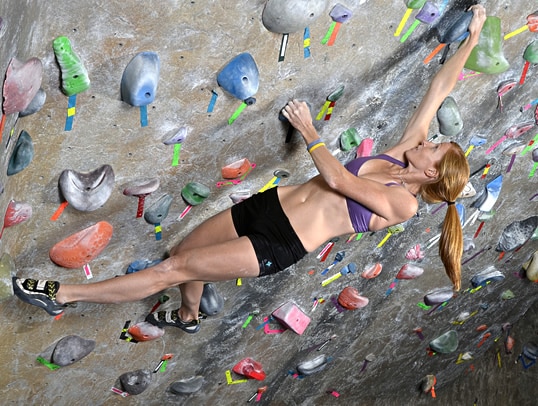Traditional strength training doesn’t always translate very well to climbing. Develop unilateral strength for climbing with these one-arm and one-leg exercises that target strength, balance, and coordination all in one!
If you still don’t know how important strength training is for climbing, you’ve been living under a rock.
…Okay, so that might not be the best analogy here seeing as we climbers tend to spend our free time literally living under rocks. The point still stands. Yes, actually climbing is the best way to improve at climbing. It is a skill sport, after all. The more practice you get, the better you’ll be. Just climbing, though, isn’t quite enough. Supplemental strength training is key for breaking out of a plateau, preventing or recovering from injuries, maintaining body tension, building muscular endurance, increasing power, and more.
But climbing imparts some pretty unique demands on the body. Traditional strength training routines don’t exactly cover all of those bases. Consider the classic overhead squat, for example. While it’s definitely an exercise worth keeping in your rotation for overall lower body sturdiness, when’s the last time you pushed with both legs with equal force like that on the wall? It’s not often.
Much more common in climbing are unilateral movements, a.k.a. pushing and pulling with one side of your body at a time. Think high steps, heel hooks, lock-offs, pogos, and any balance position.
That’s where more targeted strength training comes in. Keep the overhead squats and heavy deadlifts, but flesh out your lifting routine with a few unilateral strength exercises as well to make those one-sided moves easier and safer.
Lower Body Unilateral Exercises
It doesn’t get any better (or worse, depending on who you ask…) than the pistol squat. This exercise most closely replicates the critical high-step movement. Mastering the pistol squat means opening up more foot options on the wall and gaining efficiency of movement. Start by balancing on one foot while sticking the other straight out in front of you. Slowly lower down to a 90 degree bend in your standing leg, making sure that the second leg stays pointed forward to keep your hips aligned. Drive your standing leg into the ground as you reverse course and return to a standing position. Lunges and step-ups can help climbers build up a foundation of unilateral strength while working up to a full pistol squat. Take it to the next level by adding light weights and/or lowering your squat deeper than 90 degrees.
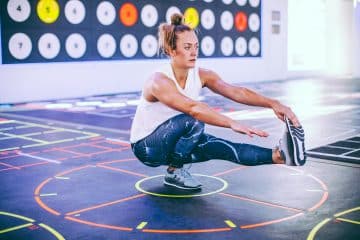
The dreaded (or beloved, depending on who you ask) pistol squat is one of the best exercises for building unilateral strength. Photo by Pavigym Prama.
Single-leg deadlifts assist with balance as they isolate each hamstring. Balance on one leg again while keeping the other mostly straight and raised just a couple inches off of the floor. Lean forward into a Warrior III position with your torso parallel to the ground and your raised leg pointed straight back behind you. Make sure your toes point toward the floor, not out to the side. Stand back up straight without bending your back leg. Increase the challenge by holding a kettlebell with both hands.
Upper Body Unilateral Exercises
One-arm pullups aren’t just a party trick; they transfer to lock-off ability on the wall. But don’t underestimate the difficulty of these bad boys! Jumping straight into a one-arm pullup can cause serious damage to your shoulders if they’re not prepared for the load. Work up to them with single-arm isometric holds. Pull up on a bar or hangboard with both hands until you reach a 90 degree angle in your elbows. Carefully let go with one hand and maintain the 90 degree angle with your other arm. Hold this position for a count of ten, or as long as you can until you start to slip out of position. For more checkpoint exercises along the way, check out Cameron Hörst’s video on how to progress to a one-arm pullup.
Don’t forget to work your antagonists in a unilateral fashion too. Try the one-arm overhead press to isolate each shoulder’s pushing muscles. Hold a dumbbell in one hand with your palm facing you and your arm bent so that your wrist meets your shoulder. Press up with the weight into a straight arm position and lower back down to your shoulder. Watch yourself in a mirror for this one to maintain good posture; don’t let either shoulder dip down! Poor form here can lead to the exact opposite of what we’re going for: injured shoulders, a climber’s second-worst nightmare (right after the dreaded pulley pop).
Unilateral strength is all about function over fashion. You might not be setting any PR’s in the weight room with these unilateral exercises, but they translate to common climbing moves more so than the conventional versions. Sprinkle these into your training routine for the kind of strength that will serve you best on the wall!
Related Articles:
- Training Progression to Learn a One-Arm Pullup
- Develop One-Arm and Lock-Off Strength With Uneven-Grip Pullups
- 5×5 Weighted Pullup Training for Increased Strength, Power, and Endurance
- 4 Minute Plank Training for Increased Core Strength and Endurance
- 2 Basic Exercises for Developing Basic Strength and Power for Climbing
Copyright © 2000–2023 Lucie Hanes & Eric J. Hörst | All Rights Reserved.

